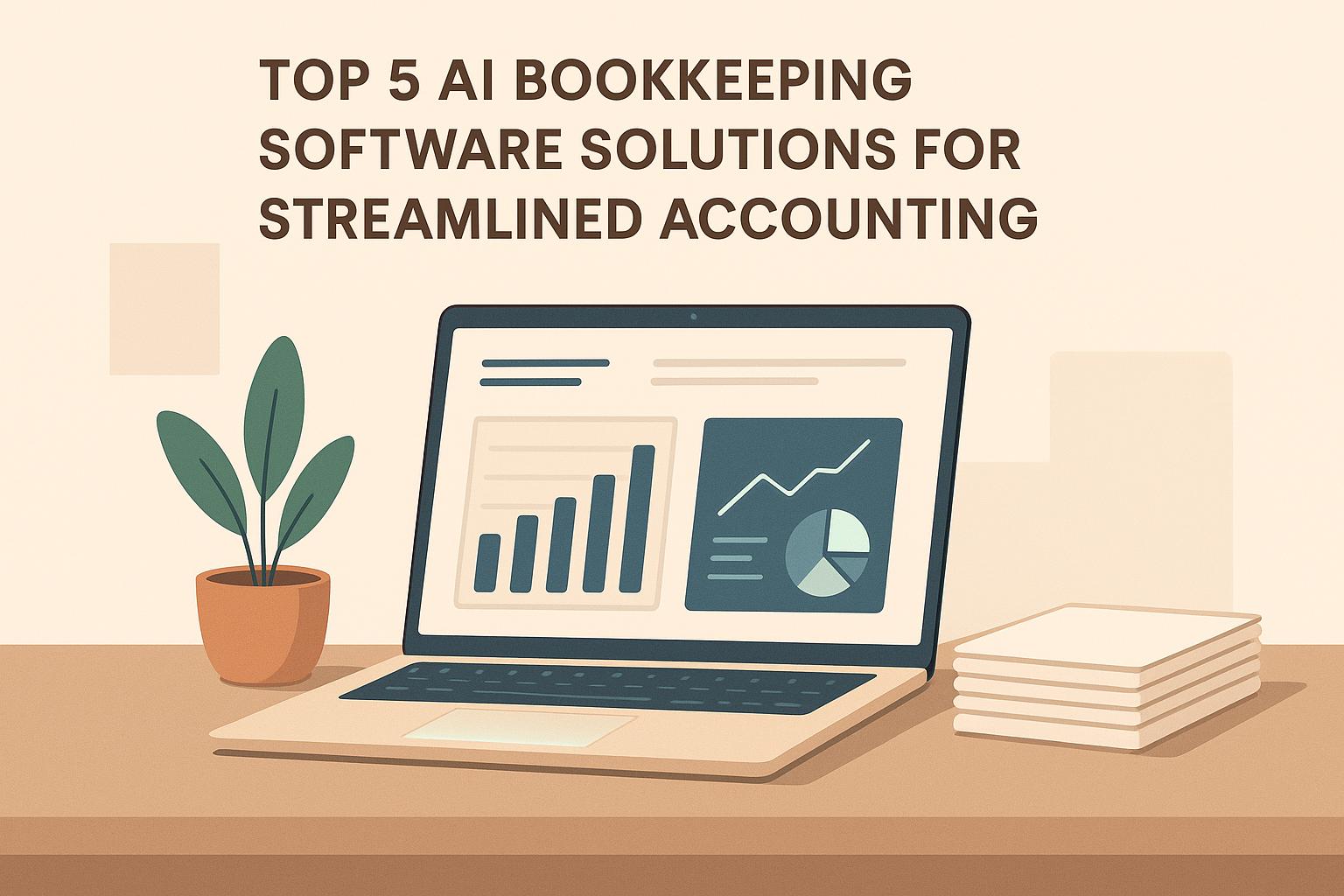AI automation can save time, cut costs, and improve customer satisfaction - but how do you measure its success? Here's a quick guide to tracking the ROI of AI in your business:
- Why it matters: 75% of leaders see benefits like 77% higher efficiency, 74% better productivity, and 72% improved customer satisfaction.
- Key metrics to track:
- Cost savings: Measure labor and error-related cost reductions.
- Efficiency gains: Track time saved on tasks and faster workflows.
- Revenue growth: Identify new services or increased billing enabled by AI.
- Customer satisfaction: Monitor metrics like response times and resolution rates.
- Examples:
- PayPal doubled payment volumes while cutting losses by half.
- Water Corporation saved 1,500 hours annually and reduced emissions by 150 metric tons.
- Legal and accounting firms cut task times by 40%-75% with AI tools.
How to get started:
- Set pre-AI benchmarks (e.g., error rates, task times, costs).
- Use tools like Microsoft Power Automate or Kissflow to track performance.
- Regularly monitor metrics and adjust based on data insights.
AI investments can deliver up to 8X ROI if measured and managed effectively. Start by focusing on clear metrics, tracking tools, and continuous improvement.
Top Metrics to Track AI Success
Money Saved and Cost Cuts
One way to measure AI's impact is by looking at cost savings. A McKinsey survey found that by 2021, 56% of organizations had adopted AI in at least one function, with cutting costs being a major motivator.
Here are some financial metrics to watch:
| Metric Type | What to Measure | Calculation |
|---|---|---|
| Direct Savings | Labor costs | Hours saved × hourly rate |
| Error Prevention | Error-related costs | Previous error costs – Current error costs |
| Process Efficiency | Operational costs | Previous process costs – Automated process costs |
For instance, PayPal reported $7.3 billion in revenue (a 7% year-over-year increase) in Q2 2023, along with an 11% reduction in losses thanks to better risk management.
AI doesn't just save money - it also simplifies workflows, making teams more productive.
Work Speed and Output Gains
Improvements in productivity are often the most noticeable results of AI. Research from Microsoft reveals that users of Copilot retrieved information six minutes faster than those who didn’t use it.
Peter Bergen, Principal Project Manager for Copilot Reporting, highlights the broader impact:
"While time savings are important, Copilot's value goes far and above people saving time. It impacts the quality of their work, it impacts the amount of effort that they have to put into things, it impacts their creativity."
- Peter Bergen
To measure productivity improvements, try these steps:
- Use task mining tools to set pre-AI benchmarks.
- Compare how long tasks take before and after AI is introduced.
- Track changes in error rates and the quality of work.
- Assess how AI improves communication efficiency.
One company using AI agents saw impressive results: tasks were completed 40% faster, error rates dropped by 20%, and customer satisfaction scores rose.
These operational benefits naturally lead to better customer experiences.
Customer Results and Service Levels
AI also plays a big role in improving customer satisfaction. Research shows that 77% of consumers value time savings as the most important part of customer service.
Key metrics for assessing service quality include:
| Metric | Purpose | Impact |
|---|---|---|
| First Contact Resolution | Service efficiency | 2x higher repeat purchase likelihood |
| Customer Effort Score | Ease of service | 96% lower loyalty with high effort |
| Response Time | Service speed | Direct link to satisfaction |
| Resolution Rate | Service effectiveness | Reflects support quality |
Zonka Feedback provides a great example. After noticing low NPS scores, they made several changes: adding in-product chat support, growing their customer success team, and improving help documentation. These adjustments led to clear service improvements.
Shamsi Iqbal, a Microsoft researcher, explains the value of these efforts:
"It's all about how you can make your investment in your employee go farther. How can you help them deliver better quality work with less effort?"
- Shamsi Iqbal
Data shows that positive customer experiences can drive huge business returns. In fact, word-of-mouth recommendations influence $6 trillion in annual consumer spending.
Building Your AI Success Tracking System
Setting Pre-AI Performance Benchmarks
Before implementing AI automation, it's important to establish clear baseline metrics. Research indicates that organizations benefit from pre-project metrics tailored to their specific goals.
Focus on these key areas:
| Performance Area | Baseline Metrics to Track | Measurement Method |
|---|---|---|
| Operational | Error rates, task completion time | Process mining tools |
| Financial | Operating costs, revenue per employee | Financial reports |
| Customer | Satisfaction scores, response times | Customer surveys |
| Employee | Productivity rates, engagement levels | Time tracking, surveys |
For instance, a company defined fraud loss metrics before introducing an AI-powered cybersecurity system. As a result, they saw an 11% reduction in losses due to improved risk management.
These benchmarks are essential for selecting tools to monitor and improve your AI's performance.
Selecting Performance Tracking Tools
Once you've set your benchmarks, the next step is choosing tools that align with your metrics and business needs.
Here are some popular options:
- Microsoft Power Automate: Starting at $15 per user/month, it integrates seamlessly with Microsoft products and holds a G2 rating of 4.5/5 from 527 users.
- Kissflow: Priced at $30 per user/month, it's ideal for startups with straightforward process management requirements. It has a G2 rating of 4.3/5 from 586 users.
- FlowForma: A more premium option at $2,180/month, offering advanced tracking for complex workflows.
Using Data to Improve Results
Data-driven strategies can significantly improve AI outcomes. For example, the American College of Radiology reported a 451% ROI over five years from an AI platform, which increased to 791% when factoring in radiologist time savings.
To get the most out of your AI systems:
-
Monitor Key Metrics Daily
Keep an eye on financial and non-financial metrics such as customer satisfaction, employee engagement, and process efficiency. -
Make Data-Driven Adjustments
Regularly refine your processes based on data insights. Rapid AI deployment cycles (as short as 2–3 weeks) have shown to accelerate improvements. -
Report Results Regularly
Share ROI updates frequently, including both measurable and less tangible benefits.
Solving Common AI Measurement Problems
Fixing Data and System Connection Issues
Issues with data quality and system connections can disrupt accurate AI measurement. Tools for network monitoring can pinpoint and resolve connectivity problems.
| Challenge | Solution | Implementation Tips |
|---|---|---|
| Data Quality | Conduct regular audits | Use automated tools to verify data completeness and accuracy |
| System Integration | Monitor the network | Track latency, packet loss, and jitter metrics |
| Hardware Problems | Perform maintenance | Schedule inspections and test cables regularly |
| Configuration Errors | Manage changes | Document updates and establish approval processes |
Set up monitoring systems to catch problems early, and keep all network devices and software updated. A solid technical foundation ensures smoother collaboration and better alignment among teams.
Meeting Team Member Expectations
After resolving technical hurdles, the focus shifts to aligning team expectations. Jalpa Desai, a 14X Top LinkedIn Voice, emphasizes:
"Establish a shared baseline of key metrics and encourage open discussion to align team perspectives."
Marco Narcisi, CEO and AI Developer at AIFlow.ml, advises:
"Use clear, jargon-free visualizations, regular reviews, and documented guidelines to ensure consistent interpretation of AI results."
Some effective strategies include:
- Developing a Common Language: Use training sessions and documentation to create shared understanding.
- Scheduling Regular Reviews: Hold periodic meetings to discuss AI performance and insights.
- Visualizing Metrics: Simplify complex data with charts and graphs to make it easier for everyone to understand.
Measuring Long-Term Benefits
Beyond short-term operational gains, tracking long-term results gives a complete view of AI's impact. Research shows that sustained AI investments often lead to major operational and financial benefits, as demonstrated by EY and PayPal's outcomes.
To measure these long-term benefits effectively:
- Track both measurable and less tangible improvements.
- Set performance benchmarks that span multiple years.
- Reassess ROI calculations on a regular basis.
- Evaluate the combined impact of various AI initiatives.
- Assess how well AI solutions can scale over time.
sbb-itb-ca9a050
AI Success Stories by Industry
Law Firm Process Improvements
AI automation has delivered impressive results for the legal sector. Over 70% of law firms have already embraced AI technologies, with adoption projected to hit 90% in the near future.
Apollo.io is a great example of how AI can transform legal operations. By using SpotDraft for self-serve contract templates and automated approval workflows, they achieved:
- Contract approvals in minutes instead of days
- A 40% decrease in legal workload
Similarly, Gameskraft leveraged SpotDraft's Contract Lifecycle Management (CLM) system to achieve:
- 75% faster contract turnaround times
- A major reduction in manual tasks
- Improved compliance monitoring
These results highlight how AI can streamline processes and boost efficiency, with potential applications across other professional service industries.
Accounting Firm Time Savings
AI is also making waves in accounting, saving time and cutting costs. NexBot's implementation revealed that AI completes tasks 2.5 times faster than humans, with companies reporting annual savings of up to $878,000 by automating repetitive tasks.
"My advice to my fellow accountants - embrace AI by automating every manual, time‑consuming process and focusing on strategic growth. Whether we like it or not, AI is here to stay and grow."
In one mid-sized retail business, automating 90% of invoice processing for 500 invoices per month saved 40 hours of labor each month.
Real Estate Service Improvements
The real estate industry is also benefiting from AI. Studies estimate that generative AI could bring $110–$180 billion in value to this sector. Areas where AI is delivering the most impact include:
| Area | Success Rate |
|---|---|
| Customer Service & Experience | 74% |
| IT Operations & Infrastructure | 69% |
| Planning & Decision-making | 66% |
To maximize these gains, real estate companies should integrate systems across property management, CRM, and maintenance platforms while prioritizing effective data management practices.
"AI helps sort and organize the data to enhance the decision-making process, while automation helps simplify the whole process and offer a more personalized service."
Is AI Worth the Investment? Learn How to Measure & Optimise AI ROI
Conclusion: Getting the Most from AI
To truly benefit from AI, it's essential to focus on the right metrics and tracking systems. Here's a breakdown of the key points to help you make the most of your AI investments.
Key Insights on Measuring AI Impact
Using data-driven metrics is critical for evaluating AI's return on investment (ROI). According to the EY AI Pulse Survey, nearly 75% of senior business leaders report seeing ROI in key areas:
| Area | Success Rate |
|---|---|
| Operational Efficiency | 77% |
| Employee Productivity | 74% |
| Customer Satisfaction | 72% |
These stats highlight the tangible benefits AI can bring across industries, showing how effective measurement can lead to actionable improvements.
Steps to Maximize AI ROI
Here’s how you can apply these insights to get better results from your AI systems:
- Document current performance metrics: Before introducing AI, establish a baseline for comparison.
- Select the right success metrics: Combine quantitative data (e.g., processing times) with qualitative outcomes (e.g., customer feedback). For instance, SS&C Technologies cut processing times by 95% using digital workers and secure LLM technology.
- Regularly monitor and adjust: Schedule consistent reviews to fine-tune AI performance and ensure it aligns with your goals.
"Without proper measurement, individual tech investments may be undervalued, misguiding growth efforts." – Jim Rowan, AI market activation leader at Deloitte
Additionally, 49% of U.S. generative AI decision-makers anticipate seeing ROI within one to three years. Keep that timeline in mind as you refine your approach.


